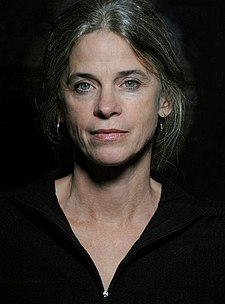Sally Mann is an American photographer, best known for her large black-and-white photographs, her early career starting with portraits of her young children, then later of landscapes suggesting decay and death.
Being born in Lexington, Virginia, the youngest of three. Mann earned a B.A., summa cum laude, from Hollins College and a MA in creative writing in 1975. However, she took up photography at a younger age where she made her photographic debut at Putney School, with an image of a nude classmate.
Her father encouraged her interest in photography so after graduation, Mann worked as a photographer at Washington and Lee University, photographing the construction of its new law school building. This then sparked the publishing of her first book in 1984, and four years later in 1988 her second book, ‘At Twelve: Portraits of Young Women’ was published. However this stimulated controversy as some of the images captured the confusing emotions and developing identities of adolescent girls expressive printing style lent a dramatic and brooding mood to all of her images.
Mann said herself that her images were “natural through the eyes of a mother, since she has seen her children in every state: happy, sad, playful, sick, bloodied, angry and even naked.” A book full of spontaneous and care free children, a sort of keepsake for Mann herself of her children growing up.
No on e else has a collection of family photographs is remotely like it, and The New Republic considered it "one of the great photograph books of our time."
After this with her fourth book, Still Time, was based on the catalogue of a traveling exhibition that included more than 20 years of her photography. The 60 images included more photographs of her children, but also earlier landscapes with colour and abstract photographs. Other publications after this concentrated on her work on landscapes. See is currently working on self portraits and intimate images of her family life.




No comments:
Post a Comment